Mitsubishi Lancer 2012 News
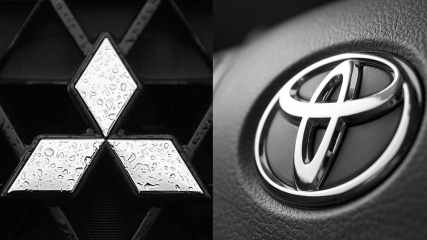
800,000 cars recalled in two days
Read the article
By Joshua Dowling · 30 Jun 2016
Cars are either being built worse -- or companies are getting better at detecting faults.a range of models made over the last 10 years replacing potentially deadly Takata airbags in 1.3 million cars in Australia. a second, airbag-related recall for the Priusreplacing potentially deadly Takata airbags in 1.3 million cars in Australia
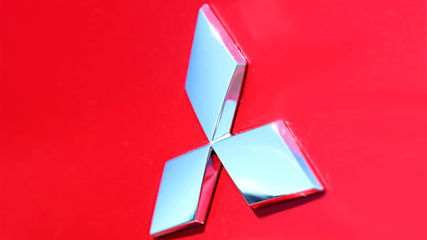
407 Mitsubishi Lancer Evo 2008-13 recalled
Read the article
By Karla Pincott · 31 Oct 2013
Mitsubishi has announced a global safety recall on their performance hero, the Lancer Evolution, for a faulty clutch master cylinder on the five-speed H-pattern manual transmission. The defect means the rally rocket's clutch could fail and the vehicle be unable to be shifted in and out of gears, risking a collision.The recall affects more than 12,000 cars around the world built at Mitsubishi's Mizushima plant -- the sole source of the Evolution model -- between December 12, 2007 and March 5, 2013, and 407 in Australia. "There have been no incidents of failure in Australia," Mitsubishi spokesperson Shayna Welsh says. "A fix will take approximately three hours and customers will be advised to contact their local Mitsubishi dealer to book in their vehicle."The carmaker will notify owners, and their local Mitsubishi service centre will replace the clutch master cylinders of any affected cars.This reporter is on Twitter: @KarlaPincott
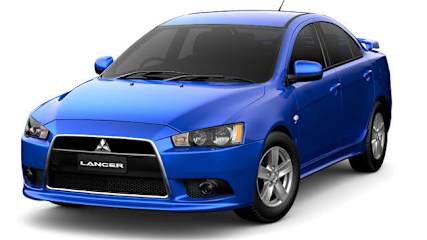
New car sales price Mitsubishi Lancer
Read the article
By Neil Dowling · 02 May 2013
The Lancer has a 3.9 per cent slice of the sub-$40,000 small-car market, but faces off against a dominant Mazda3 with 18 per cent share, and the Toyota Corolla with 16.5 per cent.
The small-car sector is virtually static in sales -- up just 0.9 per cent year-to-date -- but the buyer demand for compact, fuel-efficient cars means there are no signs of the sector weakening.
Luring buyers with the value flag is the Mitsubishi ‘Special Action Model’ - or SAM - that gets a $19,990 drive-away price for a manual sedan based on the entry-level 2.0 litre ES model.
SAM comes with metallic paint, choice of four colours, 16-inch five-spoke alloys, Ralliart front bumper and grille, VRX high-rise boot spoiler and extra bling.
Mitsubishi has announced its “compact sedan” concept will become the next Lancer, but it could be three years away. The SAM is one of the special-edition models designed to maintain sales ahead of this next generation.
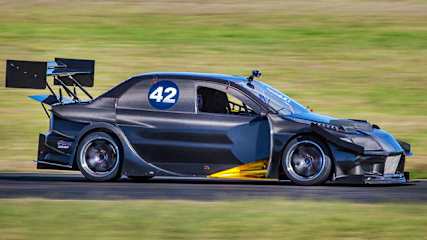
Mitsubishi Lancer Evo VII close to F1 car
Read the article
By Mark Hinchliffe · 09 Aug 2012
It's the brainchild of Queensland's Team Nemo driver and manager Chris Eaton who will debut the car at the World Time Attack Challenge at Sydney Motorsport Park on Friday, August 10.
"Other teams you'll see at World Time Attack started out with a road car and added different bits along the way," says Eaton. "From the beginning, our car has been a definite effort to integrate the aero with the suspension and driveline. Our goal has been to produce something with the best ability in every area.''
It started life as a Mitsubishi Lancer Evolution VII but and two years of development by American aerodynamicist and data engineer Andrew Brilliant it emerges as a track animal with aerodynamics "not far off an F1 car''. Just look at the stats: At 200km/h the 950kg car makes 1.6 tonnes of downforce which means - theoretically - that you could drive it upside down on the roof of a tunnel without falling off.
The team uses special Hankook semi-slick tyres with enough load rating to cope with the downforce and a 600kW turbo engine that had to be programmed to automatically drop the boost in corners to stop the wheels spinning. "The car has more than 600kW at the wheels and would struggle to get that power down in the corners if we didn't moderate the boost,'' Eaton says.
"The autoboost also improves engine reliability." It is believed the car will lap Eastern Creek at 1m29s which is as fast as Craig Lowndes lapped his V8 Supercar on full slicks.
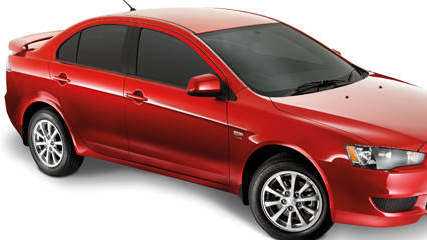
Mitsubishi Lancer upgraded
Read the article
By Kevin Hepworth · 23 Sep 2009
"In the current economic climate everybody is looking for better value for money without compromise," Mitsubishi Australia president and CEO Robert McEniry says. "The new Lancer line-up lets our customers have this without breaking the bank."
The Lancer range, which accounted for almost half of all sales for the triple-diamond brand last month, has been freshened with some minor exterior style changes, more extensive interior freshening and a limited edition RX model (from $21,990) with unique badging and wheel designs to sit beside the entry ES cars.
Across-the-range changes include a new-look instrument cluster, improved ETACS (Electronic Total Automobile Control), synchronised windscreen washers, and premium VRX-style tail lamps as standard on all variants.
The ES also gets extra storage with a floor console box and the availability of optional side and curtain airbags.
Exterior changes to the mid-range VR model include a new chrome upper grille, and alloy wheel design while NVH has been improved with the inclusion of an insulated front windscreen to cut down on road noise. The high-end Rockford Fosgate audio system is also available as an option.
The VRX and Aspire also win the sound-deadening windscreen and the premium audi system as standard. ES, RX, VR, VRX and Ralliart models are available with a sedan or Sportback body, with the premium Aspire offered solely as a sedan.
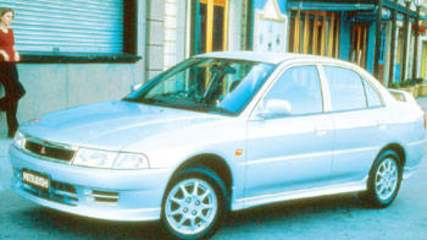
Lancer big with inner-city types
Read the article
By CarsGuide team · 01 May 2008
Over the years it's often been hidden in the shadows of its big brothers, Magna and Verada. This is a shame because it's a very competent car in its own right, it's built to a high standard and is simple to drive, with handling that's better than average for the type. Ride comfort is generally good but rough roads can rattle things about at times, especially in the budget-priced variants.
The latest, all-new Lancer was released half-way through 2007 and, as is often the case with new releases, this has renewed interest in the model as a whole. It's been a consistently good seller in recent years, meaning that there are plenty on the used car scene.
The older model Lancers are a little smaller than the latest one, which is approaching the original Mitsubishi Magna in size. However, some of the added size is to let it conform to crash safety laws so there isn't as much extra interior space as you might expect. Interior space is good in the front, but can be marginal in the rear if the front seats are adjusted rearwards to suit tall occupants. Rear seat headroom can be tight in the hatches, but is generally fine in the sedans and wagons.
Lancer is simple to drive and park and has long been a favourite with those living in the suburbs and inner-city areas. It's OK in the bush and doesn't get knocked around too badly on rough roads, though this isn't the habitat it was aimed at.
Handling is better than average for the type, though you wouldn't really call the Lancer a driver's machine. The Lancer MR coupe of 1997 to 2004 has firmer suspension and tauter steering so is an exception to the rule and has gained a reasonable reputation among those in the hot-four scene.
There have been many Lancer body types over the years; two-door coupes, three-door hatches, four-door sedans and five-door station wagons. However, not all were on sale at all times. Note that there was an overlap with the station wagon as it didn't always change its design at the same time as the rest of the range. Thus we sometimes saw the old wagons being sold for up to two years alongside the new sedans.
Three-door hatches prior to 1996 were called Lancers but the name was changed to Mirage with the introduction of the new model of that year. However, Mirage shares quite a few under-the-skin parts with Lancer and many of the remarks here can be heeded by potential Mirage buyers.
Under the bonnet
Lancer engines are all four-cylinder units. They had a displacement of 1.5 litres in the early days, a 1.8-litre unit being used in the upmarket versions from 1992 and a 2.0-litre in most models from 2002. The 1.5 engine used a carburettor until 1996 and fuel injection from then onwards.
Because the Lancer was approaching the end of its life, August 2005 saw a 2.4-litre four-cylinder engine being squeezed under the bonnet to grab sales away from the competition. This big engine has plenty of torque for safe overtaking, yet it doesn't use a lot more fuel than the smaller engines as it's running in a lightly stressed condition almost all of the time. This engine is the one to go for if your budget is up to it.
Manual gearboxes are all five-speed units. Automatic transmissions on most older models were three-speed units until 1996, when they moved up to four speeds.
The hot Lancer GSR of 1992 to 1996 is a rally-based special with all-wheel-drive and a hot twin-cam, turbo engine. It can cost big money to insure, service and repair, and is best left to the revheads. Lancer GSR models prior to the turbocharged version used a non-turbo 1.6-litre and have far less performance than the later model.
The highly specialised, highly priced Lancer Evolution models are even further up the performance scale and are so far removed from the rest of the Lancer range that we'll ignore them here.
Spare parts and repair prices are about average for this class and the Australian Mitsubishi dealer network is widespread and works efficiently.
The Lancer is relatively easy for the home mechanic to work on, with good under-bonnet space and a conventional layout.
Insurance charges are about average for the class, though you are likely to be charged substantially more for the hot GSR.
Danger signs
If possible, start the engine when it is completely cold. It should fire up within a couple of seconds and idle reasonably smoothly and quietly straight away.
Carburettor engines, only fitted until 1996, won't be quite as smooth or tractable when cold as fuel-injected ones, but if one seems too bad call in an expert for advice.
If the engine puffs oily smoke from the exhaust under hard acceleration it may be due for an overhaul.
Feel for an automatic transmission that is slow to engage gear or is inclined to change up and down unnecessarily. A manual gearbox should be slick and easy to use. If not there could be troubles — fast changes down through the gears will show the problem first.
Check for previous body repairs by looking for ripples in the panels, paint that doesn't match correctly from one panel to another, and tiny spots of paint on glass, badges, body trim and so on.
Rust is uncommon but check the lower areas of the body and the bottom corners of the doors, tailgate or boot lid as applicable.
A Lancer GSR may have had a hard life in the hands of an amateur rally driver. Look for full-harness safety belts, a roll cage, rally instruments and driving lights. Check for under body damage and for panel repairs. Also listen for a noisy turbo and/or one that's slow to respond to the throttle.

Mitsubishi?s Rex wrecker
Read the article
By Neil McDonald · 07 Mar 2008
Mitsubishi Motors Australia revealed its Subaru WRX-chasing Lancer Ralliart at the Melbourne Motor Show. The price will probably be about $40,000 when it goes on sale in August.
The newest Lancer family member is designed as a stepping stone between the ES, VR, VRX and blistering Evolution X.
Mitsubishi president Robert McEniry describes the Ralliart as a “tougher version of the street-model Lancer.”
The Ralliart is powered by a slightly detuned version of the 2.0-litre Mivec intercooled and turbocharged engine available in the Evolution X.
Despite its lower state of tune, the car still pumps out 177kW and 343Nm and misses little in the way of performance features.
It comes with Mitsubishi's twin-clutch sportronic shift transmission (TC-SST) automated manual transmission and full-time AWD with an active centre differential.
Visually, the Ralliart has a distinctive front bumper design, rear spoiler and dual exhausts.
Apart from the Lancer Ralliart, Mitsubishi will roll out the Lancer Sportback hatch later in the year. The Mitsubishi Lancer Ralliart has a distinctive front bumper.
Spicing up the image
Read the article
By CarsGuide team · 25 Nov 2006
The boosted Lancer, expected to carry the Ralliart name, will slot into the line-up below the red-hot EVO model. The range will be similar to Subaru's Impreza stable, which has a turbo AWD WRX as the main performance model with a faster, more expensive STI as the hero car.
It will be the first time Mitsubishi can offer an affordable WRX rival since the cult GSR Lancer more than 10 years ago. The Japanese carmaker has adopted a "bang for your bucks" approach, kicking-off with the Ralliart version of the Colt baby car.
Apart from giving the struggling model some positive publicity, the turbo model has added about 40 Colt sales a month.
Mitsubishi added to the build-up of the next-generation Lancer -- the brand's best-selling model in Australia -- by releasing a sketch of the car to be unveiled at the Detroit motor show in January. More aggressive, it bears similarities to the Concept X at Frankfurt last year.
The Lancer, which will be bigger than current models, is to arrive in Australia next September.
A standard model will be the first to go on sale with a new generation 2.0-litre, four-cylinder engine that is expected to produce about 120kW.
A 1.5-litre four-cylinder petrol engine and a diesel will be offered in Europe, but are unlikely here initially. The performance turbo AWD model, to compete with the WRX, joins the range in the first half of 2008 along with full-on EVO model.
Mitsubishi offers a wagon version of the Lancer, but it is unclear whether a similar load hauler is part of the next Lancer plan.
JAMES STANFORD
A classic for everyone
Classic cars owned by a mystery collector attracted $1.1 million last weekend at a Sydney auction. Some 95 cars went to a new home, while a further 58 are being referred to the vendor.
The top sellers were a 1959 Jaguar XK150, selling for $79,100, a Ford V6 Capri RS3100, which went for double what was expected at $72,320 and a 1963 Rolls Royce Silver Cloud III, for $50,850.
The cheapest model to sell on the day was a 1978 Opel Rekord, which attracted $678.
About 700 people attended the auction with a further 70 customers bidding by telephone.
The collector, a businessman who wishes to remain anonymous, amassed the 153 vehicles during a 30 year period, storing them in garages around NSW. It was the biggest private collection of classic cars offered at a public auction in Australia, outdoing both the Lindsay Fox and John Laws collections.
A 1981 De Lorean sold for a tasty $45,200, a 1953 Riley went for $25,000 and a 1981 Holden Brock Commodore fetched $32,700.
"There were so many different marques on offer within diverse price ranges," says Bonhams and Goodman chief executive officer Tim Goodman, who conducted the auction.
Base commitment
Hyundai will cement its commitment to Australia with a new $70 million headquarters in Sydney. At a groundbreaking ceremony this week Hyundai chief executive Steve Yeo says the new building will house Hyundai's Australian operations into the future.
"It is a very substantial investment for us but it was an opportunity that we simply could not miss," Yeo says.
Yeo says the multi-storey building in Macquarie Park, North Ryde, will provide enough space for Hyundai with an opportunity for future growth.
Hyundai cars have been in Australia since 1986 with the marque adopting manufacturer/importer status in 2003.

EVOcative
Read the article
By CarsGuide team · 25 Jun 2004
The last locally available Evo from a few years back
was a tweaked Ralliart version of the Evo VI.
As usual, the new model is based on a four door
sedan body and is a road going evolution of cars used
in the World Rally Championship. That's where the
Evo name comes from.
It's a bigger car than ever growing in wheelbase and
overall size and weight is up by 200kg compared to
Evo VI, to around 1400kg. This is despite weight
saving measures such as greater use of aluminium and
carbon fibre in the body and other components.
Power is down a tad to 195kW with torque around
the same at 355Nm. Acceleration is also not quite up
to the previous model at 6.1 seconds for the 0-100kmh
dash.
You'd be forgiven for thinking the VIII is a dumbed
down version of the Evo but you'd be wrong.
Driveability is better than ever and the VIII is
possibly a quicker car point to point thanks to superior
dynamics and the stiffer body.
All its underpinnings have been tried and tested in
the cut and thrust of international rallying and it shows.
While there isn't any real ground breaking new
technology, the car is subtly refined and each system
and component upgraded to deliver better perform-
ance.
It retains all the good bits like the active centre
differential and active yaw control which gives a 10 per
cent gain in traction. The suspension is upgraded front and rear as are the brakes which feature multi piston Brembo calipers and large discs with "sport" ABS. The ABS is integrated into the cars steering and
features G sensors for optimum stopping power.
Engine revisions in the 2.0-litre, twin cam, four
cylinder are significant and are aimed at reliability and lower emissions as well as stronger response across the rev range.
The torque curve is flat thanks in part to the Evo's
twin scroll turbo which has virtually no lag.
Boost pressure is up to 0.9 bar from 0.8. Redline is
70000rpm.
Though a six speed manual is available overseas, it
seems superfluous when you drive the strengthened
five speeder sold here.
On the road the new Evo is a sensational drive, a real
rocketship with startling acceleration always on tap.
And all this go is harnessed by the dynamic package
particularly the all wheel drive system which gives a
high level of grip in all conditions.
The car is a point and squirter as it virtually leaps
from corner to corner and feels like a kart due to direct steering, strong throttle response, stiff chassis and powerful brakes.
Some drivers might feel confronted by the VIII's
direct steering and firm gear change but it adds to the
sporty feel.
The interior is fairly bland in a generic Japanese
econobox way but is functional and has pretty well
everything you need like aircon and a decent sound
system. Recaro sports seats offer the necessary amount
of side support for extremly fast cornering.
Optional leather upholstery is available but there are
some other goodies to enhance the handling that
actually make the car less fun to drive because it
becomes too stiff in the ride department. Mitsubishi is aiming the Evo VIII at Subaru's WRX STi, the Mazda
RX8 and the Nissan 300Z.
It's a few grand more than the slightly quicker
accelerating STi but the Evo's a good looker with a
brash body kit and low ride height and room in the back seat. The large carbon fibre deck wing is fairly in-your-face.
Living with the Evo VIII on a day to day basis
wouldn't be a problem. Keeping your licence would.
Only 100 have been imported intially with more on
the way. Most of the first shipment have been pre-sold.




